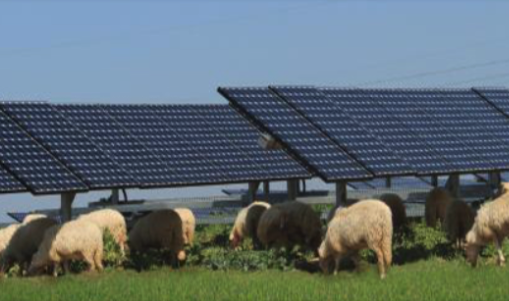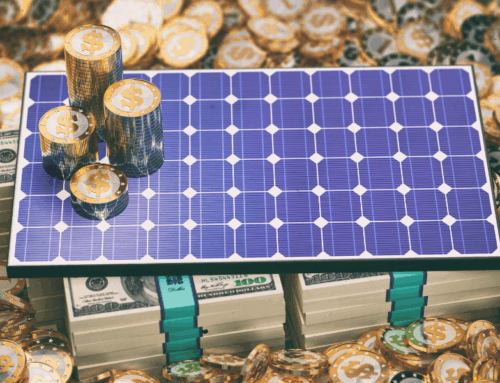WHAT IS RENEWABLE ENERGY AND HOW DOES IT WORK?
Have you been wondering what “renewable energy” really means? Renewable energy sources are literally found in sunlight, in the air, deep underground, and in our oceans. They are part of the planet’s physical structure, which means they are constantly being renewed by natural means. They simply cannot run out.
These sustainable energy sources are often called “alternative energy” because they’re considered to be an alternative to traditional fossil fuels such as oil and coal. Just because an energy source is renewable doesn’t mean it’s 100 percent environmentally safe. For instance, dams harness the power of moving water, but they can also harm fish and wildlife. Wind turbines use the sun’s energy to generate clean electricity, but there are environmental impacts from the manufacturing process.
All told, though, alternative energy resources pack a much lighter environmental footprint than fossil fuels. This is why renewable energy sources are so important – they are our ticket to a less polluted world. Even if we do not face the threat of climate change, minimizing pollution is basic for good health.
And what’s good for the environment is increasingly good economically for homeowners and businesses. Solar and wind power, in particular, are now less expensive than fossil fuels in many parts of the world, and the price keeps decreasing annually. (Learn all about going solar in our Solar Resource Center.)
So, how does renewable energy work? Here’s a look at seven clean energy sources that can be tapped directly or indirectly to help our world go green and fight global warming. Aside from geothermal and hydrogen, the sun plays a significant role in each of these types of renewable energy.
GREEN AND CLEAN: SUSTAINABLE ENERGY SOURCES
Five types of alternative energy are generated by harnessing a natural process, like sunlight or waves. They are generally the most sustainable forms of energy.
SOLAR ENERGY
Sunlight is a renewable resource, and its most direct use is achieved by capturing the sun’s energy. A variety of solar energy technologies are used to convert the sun’s energy and light into heat: illumination, hot water, electricity, and (paradoxically) cooling systems for businesses and industry.
Photovoltaic (PV) systems use solar cells to convert sunlight into electricity. Solar hot water systems can be used to heat buildings by circulating water through flat-plate solar collectors. Mirrored dishes that are focused on boiling water in a conventional steam generator can produce electricity by concentrating the sun’s heat. Commercial and industrial buildings can also leverage the sun’s energy for larger-scale needs such as ventilation, heating, and cooling. Finally, thoughtful architectural designs can passively take advantage of the sun as a source of light for heating and cooling.
Homeowners, businesses, and government entities can take advantage of the benefits of solar power in many ways: Install a home solar system or commercial solar panels, construct or retrofit a building to incorporate solar hot water, cooling or ventilation systems designed from scratch structures that take advantage of the sun’s natural attributes for passive heating and lighting.
CAPTURING THE WIND
Wind can be considered a form of solar energy because the uneven heating and cooling of the atmosphere cause winds (as well as the rotation of the earth and other topographical factors). Wind flow can be captured by wind turbines and converted into electricity. On a smaller scale, windmills are still used today to pump water on farms.
Commercial-grade wind-powered generating systems are available to meet the renewable energy needs of many organizations.
Single-wind turbines can generate electricity to supplement an existing electrical supply. When the wind blows, power generated by the system goes to offset the need for utility-supplied electricity.
Utility-scale wind farms generate electricity that can be purchased on the wholesale power market, either contractually or through a competitive bid process.
GEOTHERMAL: POWER FROM THE EARTH
Geothermal energy is derived from the heat of the earth. This heat can be sourced close to the surface or from heated rock and reservoirs of hot water miles beneath our feet.
Geothermal power plants harness these heat sources to generate electricity. On a much smaller scale, a geothermal heat pump system can leverage the constant temperature of the ground found just 10 feet under the surface to help supply heat to a nearby building in the winter or to help cool it in the summer.
Geothermal energy can be part of a commercial utility energy solution on a large scale or can be part of a sustainable practice on a local level. Direct use of geothermal energy may include Heating office buildings or manufacturing plants, helping to grow greenhouse plants, heating water at fish farms, and aiding with various industrial processes (e.g., pasteurizing milk).
FROM WATERWHEELS TO HYDROELECTRICITY
Hydropower isn’t a new invention, though the waterwheels once used to operate the gristmills and sawmills of early America are now largely functioning as historic sites and museums.
Today, the kinetic energy of flowing rivers is captured in a much different way and converted into hydroelectricity. Probably the most familiar type of hydroelectric power is generated by a system where dams are constructed to store water in a reservoir which, when released, flows through turbines to produce electricity.
This is known as “pumped-storage hydropower,” where water is cycled between lower and upper reservoirs to control electricity generation between times of low and peak demand.
Another type, called “run-of-river hydropower,” funnels a portion of river flow through a channel and does not require a dam. Hydropower plants can range in size from massive projects such as Hoover Dam to micro-hydroelectric power systems.
Direct use of hydroelectric power is naturally dependent on geographic location. Assuming a dependable waterway source is accessible and available, micro-hydroelectric plants can be constructed to supply electricity to farm and ranch operations or small municipalities.
Small towns can harness the energy of local waterways by building moderately sized hydroelectric power systems.
POWER FROM THE OCEAN
There are two types of energy that can be produced by the ocean: thermal energy from the sun’s heat and mechanical energy from the motion of tides and waves.
Ocean thermal energy can be converted into electricity using a few different systems that rely on warm surface water temperatures. “Ocean mechanical energy” harnesses the ebbs and flows of tides caused by the rotation of the earth and the gravitational influence of the moon. Energy from wind-driven waves can also be converted and used to help reduce one’s electricity costs.
There are also lesser-developed technologies that leverage ocean currents, ocean winds, and salinity gradients as sources of power conversion.
Cold ocean water from deep below the surface can be used to cool buildings (with desalinated water often produced as a by-product), and seaside communities can employ the methods to tap natural ocean energy described above to supplement municipal power and energy needs.
Ocean energy is an evolving source of alternative energy production, and with more than 70 percent of the surface of our planet covered by the ocean, its future looks promising, depending on geographies and regulatory guidelines.
OTHER ALTERNATIVE ENERGY SOURCES
These two types of renewable energy have to be produced using mechanical means, rather than by harnessing a natural process.
Bioenergy is a type of renewable energy derived from biomass to create heat and electricity or to produce liquid fuels such as ethanol and biodiesel used for transportation.
Biomass refers to any organic matter coming from recently living plants or animals. Even though bioenergy generates about the same amount of carbon dioxide as fossil fuels, the replacement plants grown as biomass remove an equal amount of CO2 from the atmosphere, keeping the environmental impact relatively neutral.
There are a variety of systems used to generate this type of electricity, ranging from directly burning biomass to capturing and using methane gas produced by the natural decomposition of organic material.
How is bioenergy used? Businesses or organizations that transport goods or people can convert their fleets to vehicles that use biofuels such as ethanol or biodiesel.
Manufacturing facilities can be equipped to burn biomass directly to produce steam captured by a turbine to generate electricity.
In some cases, this process can have a dual purpose by powering the facility as well as heating it. For example, paper mills can use wood waste to produce electricity and steam for heating. Farm operations can convert waste from livestock into electricity using small, modular systems.
Towns can tap the methane gas created by the anaerobic digestion of organic waste in landfills and use it as fuel for generating electricity.
HYDROGEN: HIGH ENERGY/LOW POLLUTION
Hydrogen is the simplest (comprised of one proton and one electron) and most abundant element in the universe, yet it does not occur naturally as a gas on Earth. Instead, it is found in organic compounds (hydrocarbons such as gasoline, natural gas, methanol, and propane) and water (H2O). Hydrogen can also be produced under certain conditions by some algae and bacteria using sunlight as an energy source.
Hydrogen is high in energy yet produces little or no pollution when burned. Liquid hydrogen has been used to launch space shuttles and other rockets into orbit since the 1950s. Hydrogen fuel cells convert the potential chemical energy of hydrogen into electricity, with pure water and heat as the only byproducts.
However, commercialization of these fuel cells as a practical source of green energy will likely be limited until costs come down and durability improves. Almost all the hydrogen used in the United States is used in industry to refine petroleum, treat metals, produce fertilizer, and process foods. In addition, hydrogen fuel cells are used as an energy source where hydrogen and oxygen atoms are combined to generate electricity.
There are also currently a few hundred hydrogen-powered vehicles operating in the United States, a number that could increase as the cost of fuel cell production drops and the number of refueling stations increases. Other practical applications for this type of renewable energy include large fuel cells providing emergency electricity for buildings and remote locations, electric motor vehicles powered by hydrogen fuel cells, and marine vessels powered by hydrogen fuel cells.
This post originally appeared on the SunPower Resources Blog.








